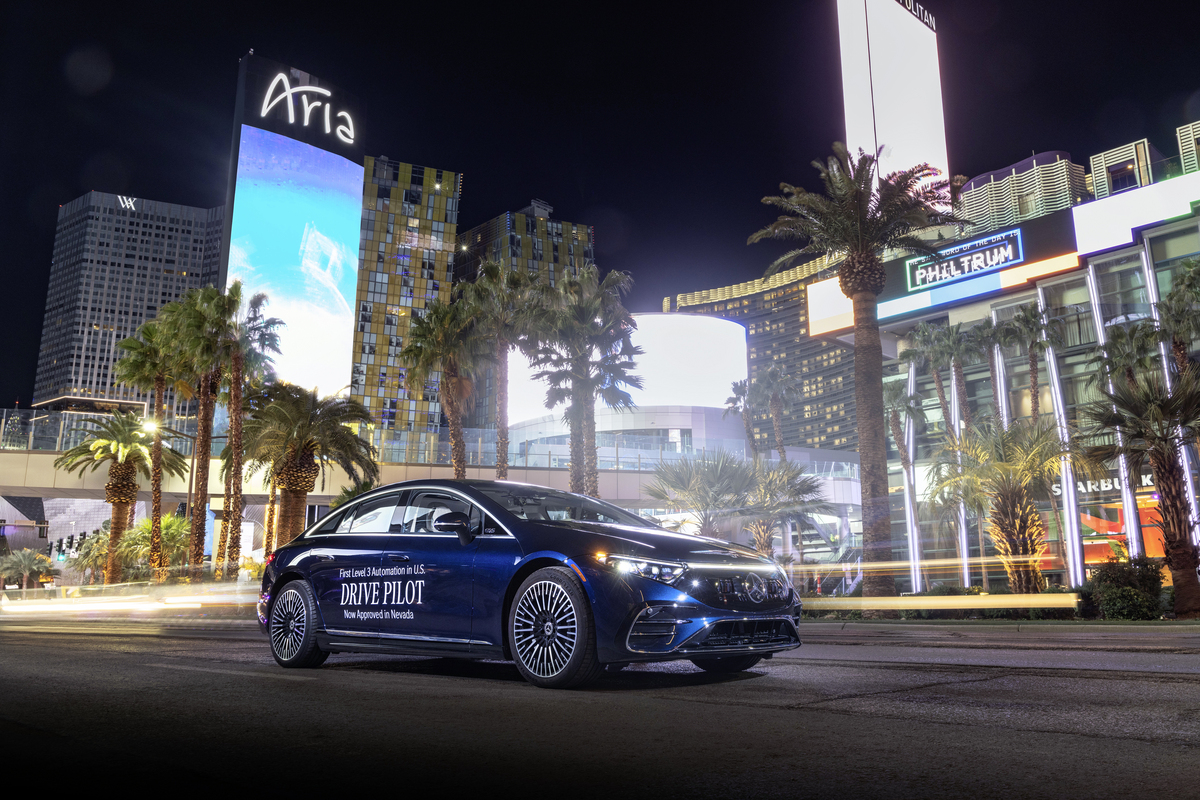Mercedes beats Tesla to bring Level 3 autonomous driving to the US
The German company’s Drive Pilot driver assistance system has been certified for public use in Nevada


In what will undoubtedly be a blow to Tesla, Elon Musk and the company’s Autopilot driver assistance system, Mercedes has taken a step closer to full automation with its rival, called Drive Pilot.
The system’s new Level 3 automated driving capability has just been certified for use on public roads in the US state of Nevada, putting Mercedes ahead of all of its rivals, including Tesla.
Drive Pilot is available on the latest, 2024 model year Mercedes S-Class and electric EQS cars. The system is described as being capable of “conditionally automated driving”. With it enabled, Mercedes says the system “will allow the driver to hand over the dynamic driving task to the vehicle under certain conditions.”
Mercedes goes on to explain how Drive Pilot’s Level 3 function can be used “on suitable freeway sections and where there is high traffic density”. It can take over the driving at speeds of up to 40 mph, controlling the car’s speed, distance to the vehicle in front, and lane position.
The German carmaker added: “The route profile, events occurring on the route and traffic signs are correspondingly taken into consideration. The system also reacts to unexpected traffic situations and handles them independently, e.g. by evasive manoeuvres within the lane or by braking manoeuvres.”
The relatively low speed limit and preference for dense traffic means this system should help drivers navigate frustrating stop-start motorway traffic; the sort of environment that Level 2 systems have managed with for years now, but now handled with greater intelligence.
Mercedes says it plans to offer the system in California later this year, with certification documents filed with state authorities.
Get all the latest news, reviews, deals and buying guides on gorgeous tech, home and active products from the T3 experts
The latest iteration of the Drive Pilot system uses lidar and cameras, as well as a microphone for detecting the sirens of emergency vehicles and sensors in the wheel arches for identifying wet road conditions. Cars fitted with Drive Pilot also have redundant steering and braking actuators, as well as a redundant electrical system so that the vehicle remains driveable if a system fails and the driver needs to take back control.
If the driver is unable to resume control, perhaps because they have suffered a health problem, the car will slow down, stop, switch on the hazard warning lights and call the emergency services. Tesla cars also do this if their Autopilot system’s requests for the driver to resume control are ignored.
Mercedes also recently announced plans to build its own electric car charging service, similar to the Tesla Supercharger network.
Alistair is a freelance automotive and technology journalist. He has bylines on esteemed sites such as the BBC, Forbes, TechRadar, and of best of all, T3, where he covers topics ranging from classic cars and men's lifestyle, to smart home technology, phones, electric cars, autonomy, Swiss watches, and much more besides. He is an experienced journalist, writing news, features, interviews and product reviews. If that didn't make him busy enough, he is also the co-host of the AutoChat podcast.
